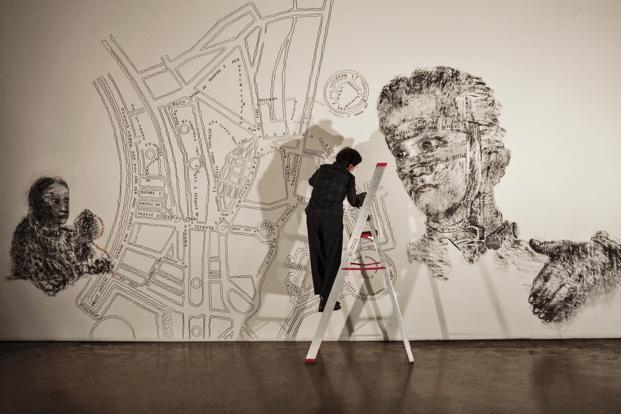The second part of veteran feminist artist’s mammoth retrospective, The Rebellion of the Dead, opens in Italy
While Malani’s retrospective, curated by Marcella Beccaria, showcases works from her oeuvre that have been shown over the last 50 years at various galleries and museums, Dream Houses (Version I) is a work that will premiere alongside City Of Desires. The stop-motion animation was made by Malani at the beginning of her career. It will be projected on the wall drawing.
The artist’s politically charged works have often explored themes of violence and loss—with a particular focus on women, where she has panned her lens on their place in society and their tutored passivity. Much of Malani’s works, however, also reflect her pre-occupation with the marginalized, the displaced and the powerless. “It’s like George Orwell who once said, ‘Either we all live in a decent world or nobody does’,” she says on the phone. “We don’t give enough attention to the very people who are the backbone of our cities. The cleaners and the scavengers—our cities are functioning because of them. Their importance is enormous. So, while the subaltern may not speak, we must give them a voice and respect.”
The in-situ wall drawing is titled City Of Desires—Global Parasites. It is an ode to Mumbai’s cultural plurality and its characteristic inclusivity. Several scavengers, plumbers and labourers—“People who take care of the city but are themselves invisible”—are dwellers who’ve travelled from different parts of the country to find a home in Mumbai. “For me, Bombay has always been a city of multiplicity, where people dream of utopia. Many people from rural India pack their belongings and come to this city in search of better future. So, this city is a city of desires—a city that gives you a sense of hope.”
....
